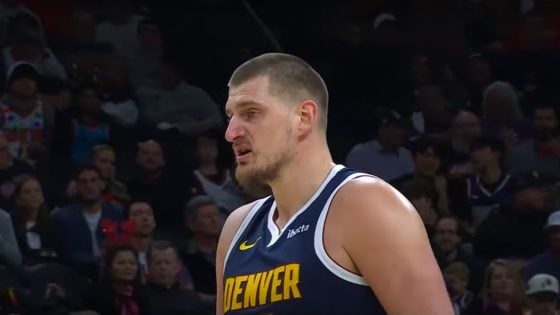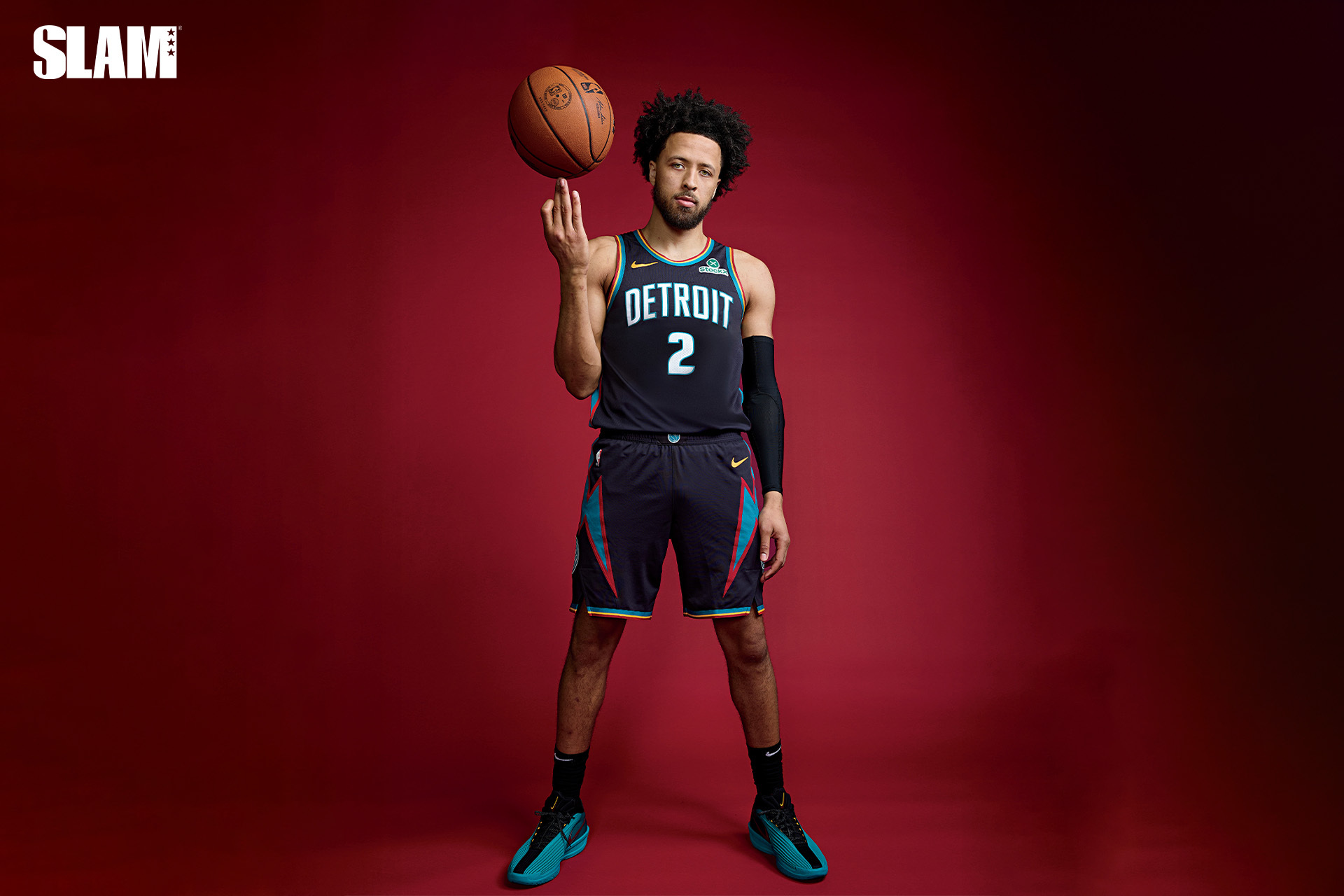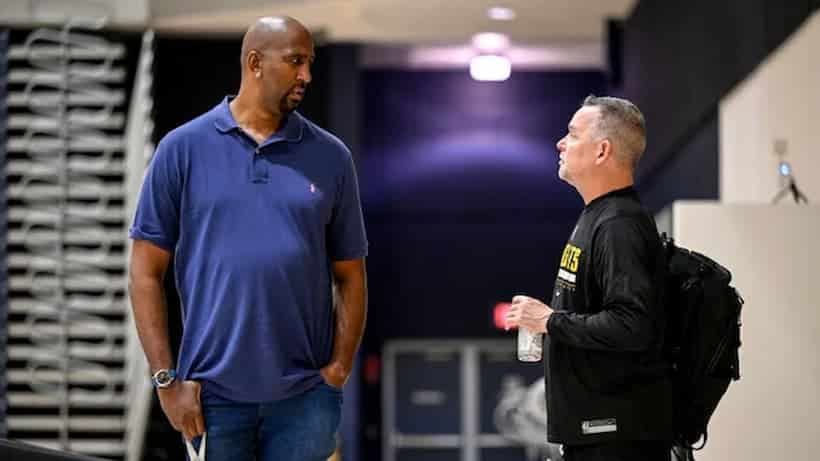If you’ve watched any NBC Sports Boston broadcast over the past few seasons, you’ve probably heard the term “two-for-one.” That’s because color commentator and NBA champion, Brian Scalabrine, absolutely loves it.
The “two-for-one” is the concept of a team working to outshoot their opponent in the final 40 seconds of a quarter, by taking shots at specific points to manipulate the shot clock.
For example, the Celtics will fire up an attempt with roughly 32 seconds remaining in a period to force their opponent’s shot clock to expire with enough time left for Boston to get a second look with a decent amount of time remaining.
Scal loves this. It might be his favorite thing. Anytime that the Cs have the ball with an opportunity to go for a “two-for-one,” he’ll be sure to gleefully point it out to either play-by-play announcer Mike Gorman or Drew Carter.
As for me, someone who has never played basketball above the high-school level, but watches every single Celtics game, I feel the same way about the two-for-one as Kramer and Newman do about Keith Hernadez.
I despise it.
In theory, the idea of strategically timing your shots in order to get an advantage seems simple. There are plenty of times when it works out, like this:
In practice, it can be rough on the eyes. A lot of the time it looks like Boston’s players are more willing to settle for two mediocre shots rather than working to get the best look possible.
Here’s an example:
I got so sick of watching the Celtics seemingly fire up tough shot after tough shot that I decided to go back and watch every single one of their two-for-one chances.
I have rewatched every Celtics 2-for-1 opportunity
Ask me anything
— Sam LaFrance (@SamLaFranceNBA) January 26, 2024
Shoutout to thehighlow.io for making it easy for me to go in and find each and every one of the two-for-one sequences. I set the search to plays that happened with less than 40 seconds to go in each quarter and was able to find everything I needed.
My ultimate goal was to see if the two-for-one was actually worth all of the hassle that we see almost every game. To do so, there were several factors that I took into account.
I went game-to-game and logged the opponent, quarter, shot types for each attempt, shooters for each attempt, the openness of each attempt, the time at which each attempt was shot, whether the shots went in, whether the Celtics got a stop on defense, and lastly, whether they won, lost, or tied the last 40 seconds of the given period.
Here’s what I found.
Through the February 4 win over the Memphis Grizzlies, it has been pretty rare for the Celtics to come out on the wrong end of a two-for-one. This is true in multiple ways. First and foremost, Boston has seemingly mastered the clock management that goes into ensuring that they’ve got the ball with 40-30 seconds remaining.
This could have something to do with the big-brain basketball strategy known as the three-for-two. This is something that Jayson Tatum discussed during an appearance on The Old Man & the Three.
It’s the same thing as the two-for-one, just with more possessions.
I looked at every quarter of every game and found that typically the strategy is most commonly used in the first three quarters. Of course, in the fourth, things are a bit different with the intensity of the game being dependent on the score. No team is going to try and outshoot their opponent if they’ve already got the win sealed.
So, for the purpose of this exercise, we’ll say that through their first 50 games, the Cs had roughly 150 (3×50) windows to create a two-for-one. They managed to put themselves in a position to attempt one in 107 different instances, which is about 71% of the time (*the analytics gang nods).
Of those 107 tries, Boston outscored their opponents 53 times — just under 50% of the time. That number looks far better if you look at the times that they simply did not get outscored, which make up 78% of the tally.
Regardless, if you’re for or against the two-for-one, it’s tough to argue that it doesn’t statistically give the Cs an advantage over their opponents. The math alone should be able to tell you that. Getting two shots instead of one simply gives them more opportunities to put points on the board.
Again, a lot of the pushback from the fanbase, as well as myself, is caused by the quality of shots that the team gets. From an eye test and memory perspective, it feels like the majority of those attempts are rushed threes that are fired up just for the sake of getting an extra shot.
How true is this?
Well, it’s complicated. The quality of shot that the Celtics typically get in their first attempt isn’t the greatest in terms of openness. Roughly two-thirds of those attempts have come with a defender making a decent contest. It doesn’t sound great, but it’s the NBA. Getting open shots consistently can be difficult. Especially if you’re on a bit of a time crunch and the defense knows it. On average, the Cs will fire up their first attempt with about 32.7 seconds remaining in the quarter.
Boston does take a lot of threes in the top half of the two-for-one. So far, 56 of their 95 shot attempts have come from long range in that situation (with 12 attempts missing due to fouls and turnovers). This shouldn’t come as a surprise because the Cs are the league leaders in three-point attempts per game. The good news is that their most frequent shot here has been a catch-and-shoot three, which is the best of its kind. Boston has made just under 40% of those shots on the season (not limited to two-for-one tries).
The second most frequent first shot has been split between stepback threes and layups, both with 18 total attempts. The third most frequent has been pull-up threes, with 15 total attempts. So, the bulk of the chances have been threes or layups, another staple of Boston’s offensive game plan.
Speaking of offensive staples, it shouldn’t come as a surprise that Tatum has been the player to take the majority of these shots. He’s taken 34 to this point, over double the total from Jaylen Brown, who’s taken 16 as the next most frequent shooter. The shot distribution goes just about as you’d think it would, with one exception.
Payton Pritchard has taken the first shot 11 times, the fourth most on the Celtics. This could mean a few things. One, it could mean that Joe Mazzulla trusts him as a shot creator and ball handler. Two, it could be the first sign of the Cs straying away from the norm in these situations. Even if that’s the case, it still makes sense due to that first wrinkle. Pritchard is a gifted offensive player, so it makes sense for him to be put into a place to take shots when the team needs a bucket.
As a team, the Celtics have converted on 44.5% of their first two-for-one shots. That number is over 3% lower than their season-long efficiency of 47.7%. When it comes to the back half of the two-for-one it gets a little less reliable. Boston’s field goal percentage drops down to 43.9% in those spots, which makes sense.
They’re taking these shots with an average of 3.6 seconds left to play. It can be tough to guarantee that they’ll get a good look when the clock is about to expire.
The strange thing here is that more of Boston’s final attempts have been more open than the ones that they’d taken about 30 seconds prior. Just under half of the 85 shots that the Cs have fired up to close out quarters have been open. Of that group, 31 have been open off of the catch and 11 have had to be created.
Catch-and-shoot attempts from beyond the arc have remained the most frequent shot type here with 18 total shots, but layups now stand alone in second place at 17. Stepback and pull-up threes round out the top four with 14 and 12 attempts, respectively.
Tatum’s workload has remained consistent, as he’s taken the exact same amount of looks in the back end of the two-for-one with 34. Pritchard has been the second most frequent shooter with 17 attempts, two ahead of Brown.
What do I make of all of this?
Well, for starters, I no longer think that the Celtics should stop doing the two-for-one. The math makes it so they’re in a spot to succeed and outscore their opponent to close quarters, which — to me — is a key part of winning basketball and as we all know, Mazzulla loves math, too. There’s nothing worse than building a lead all quarter just to have nothing to show for it after the buzzer sounds.
If Boston can guarantee that they won’t be outscored in the final minute or so 78% of the time then they should do it.
Now, it’s certainly not perfect.
Seeing how the Celtics should be getting 66% of possessions in the final minute or so, then they should be outscoring their opponents at least 66% of the time. But, as mentioned earlier, that number is actually a tick under 50%.
Instead of straying away from going for two-for-ones, they should instead be trying to perfect it. I’m sure Mazzulla and his staff have spent a fair amount of time maximizing these opportunities, but their late-quarter offense does have a rushed feel to it — even if they’re not necessarily being hurt by operating it that way.
Plus, a lot of the shots that they’re getting are well-defended.
:no_upscale()/cdn.vox-cdn.com/uploads/chorus_asset/file/25269368/usa_today_22286668.jpg)
One way that they could do so would be to create some quicker actions that get Kristaps Porzingis involved. That man is NEVER the one getting shots during a two-for-one. He’s taken just 11 total up to this point, which is sixth most on the team, tied with Sam Hauser.
It’s strange to see him involved so little, despite being the team’s third-leading scorer at 19.7 points per game. In fairness, he’s missed his fair share of time due to a nagging calf strain (and they’re also trying to keep him healthy for the playoffs). But, when he’s out there, he should be used as a weapon in these quick sets. Porzingis can easily serve as a roll or pop man in the pick-and-roll set, which Boston has used plenty of to create threes.
He’s also been one of the league’s best out of the post. The big Latvian has averaged 1.42 points per post up, which is the most of any player who posts up more than once per game. Why not throw in some fast actions that get him easy looks down low? They could do the same for Tatum, who has also been excellent out of the post this year.
At the end of the day, the two-for-one is far more effective for the Celtics than the eye test would indicate. They’ve done an excellent job of ensuring that they’re not getting cooked at the end of quarters and that’s important for sure. The next step is to figure out the best ways to maximize the shot quality that they’re getting in those situations.
Anyone interested in viewing the spreadsheet I put together for this can do so here:






